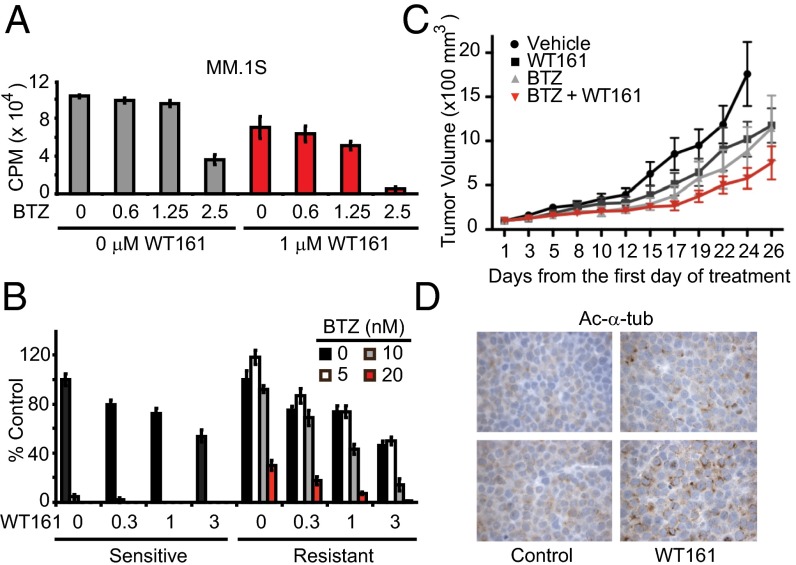Fig. 6.
Anti-MM activity of WT161 overcomes resistance and decreases tumor burden in vivo. (A) MM.1S cells were cocultured with BMSCs ± WT161 with increasing concentrations of BTZ (measured in nanomolars) for 24 h. Cell proliferation was assessed by [3H]-thymidine uptake; n = 3. CPM, counts per minute. (B) ANBL-6 (BTZ-sensitive) and ANBL-6-V5R (BTZ-resistant) cells were cultured with increasing concentrations of WT161 for 24 h in the absence or presence of increasing concentrations of BTZ. Cell growth was assessed by MTT assay; n = 3. (C) SCID mice were injected s.c. with 5 × 106 MM.1S cells and were treated with vehicle, WT161 (50 mg/kg, i.p.), BTZ (0.5 mg/kg, i.v.), or BTZ + WT161 for 26 d. Tumor volume (100 × mm3) was measured and calculated versus time (days); n = 9 mice per group. All data represent mean ± SD. (D) Immunostaining of Ac-α-tubulin in xenograft tissue from two control and two WT161-treated mice. Representative results are shown.

